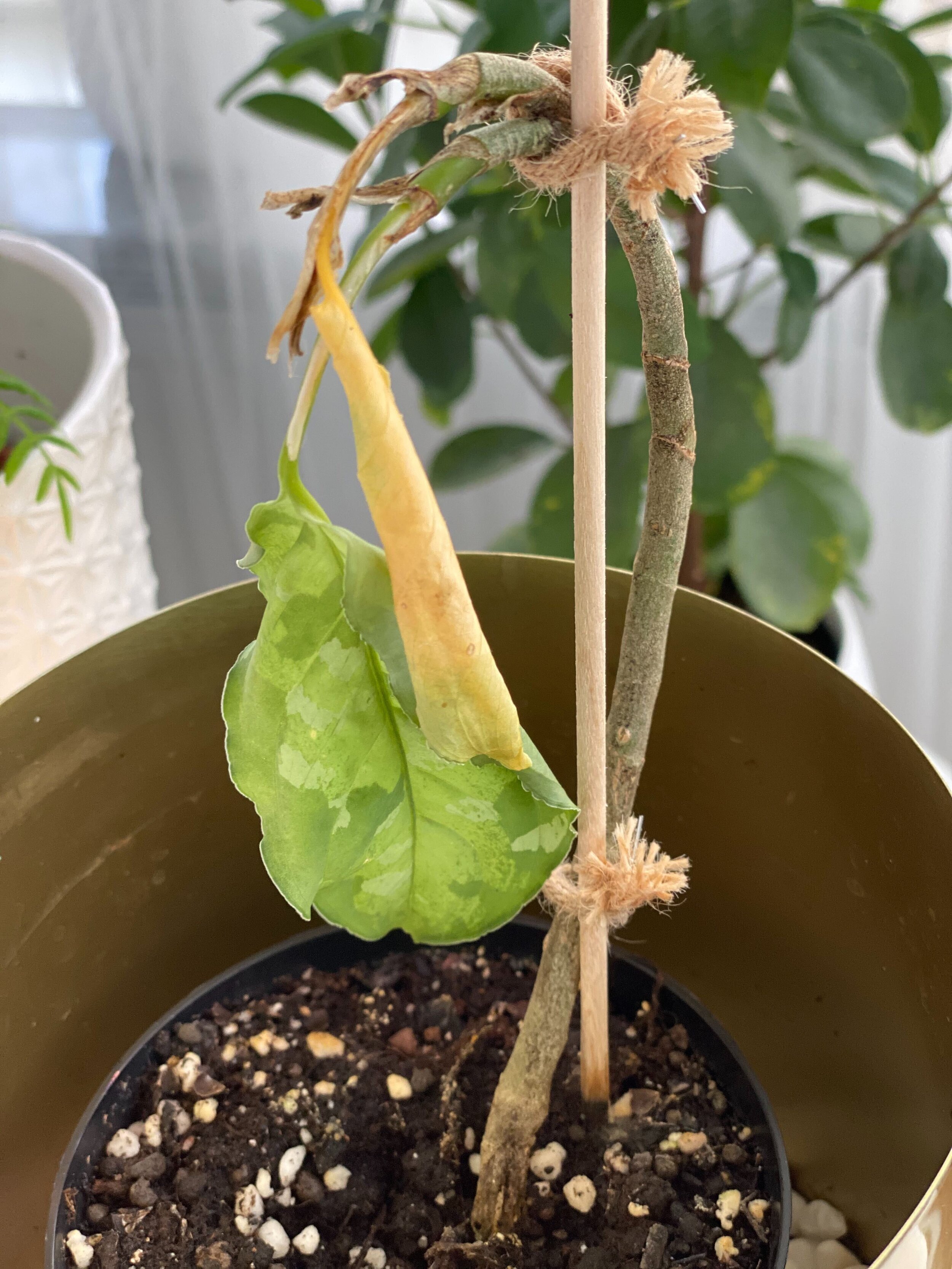Why is this happening?
Lack of drainage can be fatal to your plant, and it’s one of the most common reasons for unhealthy and dying plants. If your plant has been overwatered due to the lack of drainage holes, you should repot your plant as soon as possible.

What to do now
Carefully lift the plant from the pot
Remove as much of the old soil as possible
Repot your plant into a pot with drainage holes and use a recommended soil type
Register that you repotted your plant in Planta to update the care schedule
In extreme cases or if your plant is in bad shape, take a couple of cuttings from the plant. That way you can restart the plant from scratch if things go bad
Common questions
Why are drainage holes so important?
Plants need to exchange oxygen and carbon dioxide with the air to live. Contrary to leaves that produce more oxygen than carbon dioxide, the roots only use oxygen and produce carbon dioxide. There must be sufficient gas exchange to air it out.
The roots get smothered by water and can’t exchange oxygen and carbon dioxide with the surrounding air
If the roots stand in water for too long they can rot, which results in the inability to transport water and nutrition from the soil up to the plant — and so the plant dies
Excess water collects in the bottom of the pot, so even if the top soil feels dry, the roots might be soaking wet. This leads to overwatering - which is the most common issue for plants without drainage holes
High moisture levels in the soil can increase the risk of fungal, viral and bacterial infections in your plants.
Overwatering might still happen in a pot with drainage holes, but the risk of over saturated soil is much lower.
How can I be sure my plant is overwatered
Waterlogged soil can lead to root rot, a serious condition that can easily kill nearly any plant. Signs of root rot include wilted leaves that don’t perk up after watering, yellow leaves, and leaf drop. If you remove the plant from the container, you may see black or brown, slimy or mushy roots.
Why are there so many pretty pots without holes in them?
Honestly, it’s annoying but, you can still use them. Just place your plant in a plastic container with drainage holes and then place all of that in the pretty pot. Every time you need to water, simply remove the smaller container and water it in the sink. When it’s finished draining, replace it in the decorative pot. You can, of course, also keep it in the outer pot while watering. Just remember to remove excess water left in the outer pot after you've watered your plant.
Can't I just place a lot of pebbles in the bottom?
You can put LECA or pebbles in the bottom of the pot but this does not help with the issue of no drainage hole. The water will still be filling the air pockets in the soil if you give too much or risk underwatering your plant if you give too little.